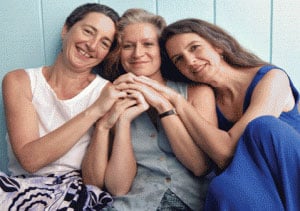_______________________________________
Living with Dementia: Impact on Individuals,
Caregivers, Communities and Societies
For health professionals, students, family caregivers, friends of and affected individuals, and others looking to learn about dementia and quality care
_______________________________________
Editor’s Note: The article was originally published in the Winter 2016 edition of InSight Magazine.
By Deborah Fries
Across the nation, most dementia patients are receiving daily care not in nursing homes or hospitals, but in home settings with unpaid and untrained family members. And though caregivers often seek additional information from professionals, their responsibilities can keep them from leaving the home for classes.
That is why Drs. Laura Gitlin and Nancy Hodgson created “Living with Dementia: Impact on Individuals, Caregivers, Communities and Societies.” The course is a free MOOC (massive open online course) offered through Coursera.
In the course of five weeks, a mixed community of healthcare professionals and at-home caretakers develop a foundational knowledge of the impact dementia is having on individuals, caregivers, communities, and societies worldwide.
At the Johns Hopkins School of Nursing, Gitlin and Hodgson found success with the program, providing more than 50,000 participants in 169 countries with a framework of the pathophysiology of Alzheimer’s and related dementias. The course maintains a primary focus on needs, such as the need to maintain one’s personhood while losing cognitive function; the needs of the caretaker to have an arsenal of strategies for caregiving and coping; and the needs of community to successfully accommodate and include its vulnerable elderly.
Gitlin, who directs Johns Hopkins’ School of Nursing Center for Innovative Care in Aging, said the emphasis on caregiving has made the online course resonate with a broad audience.
Module 3 is devoted to specific, non-pharmacological strategies that can be used to reduce stress from long-term care in the home. Progressive simplification — such as reducing the contents of a medicine cabinet to only essentials and streamlining daily grooming routines — is one of several practical approaches presented in a series of video lectures.
From changes to the environment, such as decluttering and adding high-contrast visual cues, to simplifying daily activities, the advice in these videos are most likely to be adopted and implemented by women, most often the primary caregiver in home-based, long-term care. Not surprisingly, women have comprised more than 65 percent of the Hopkins’ MOOC participants.
The guidance given in the giant global classroom of the MOOC can be adopted by a caretaker in Paducah or Pretoria, which makes it especially useful in a world where dementia is a growing burden, with changing prevalence rates that have soared in low and middle-income countries. Hardest hit by imploding rates are Latin America, the Caribbean, Western Europe and East Asia. Only 10 countries, including the United States, have developed national plans to deal with its impacts.
Whether taken for educational credit, professional development or personal support, such courses build upon existing knowledge and aim to create momentum for creative solutions. They inform policy-making and help to create what Gitlin calls “an elder workforce” — those folks who will design dementia-friendly communities, and, ultimately, redefine living with dementia.
Gitlin said the course content — left online in February for participants to revisit — will remain current for two to three years. Plans are underway to produce several new videos for occupational therapists who work with dementia patients and to make the existing Living with Dementia content, as well as subsequent versions, available on demand.
When the second offering of the Hopkins MOOC ended in February 2015, small groups from around the world vowed to continue their work together. Participants had forged new relationships and acquired new tools. They’d downloaded the 23 course videos in excess of 300,000 times. They’d created 1,200 action plans to address a need they’d identified in their own community — most in response to the needs for building awareness and providing support for caregivers.
Archived course discussion groups from months ago are part of the group’s continued commitment to working together. They address questions like what to do for a polylingual patient, what to do for a mother who is having difficulty swallowing, how to participate in the forums as a person living with the disease, and what to do in the middle of nowhere with no resources.
